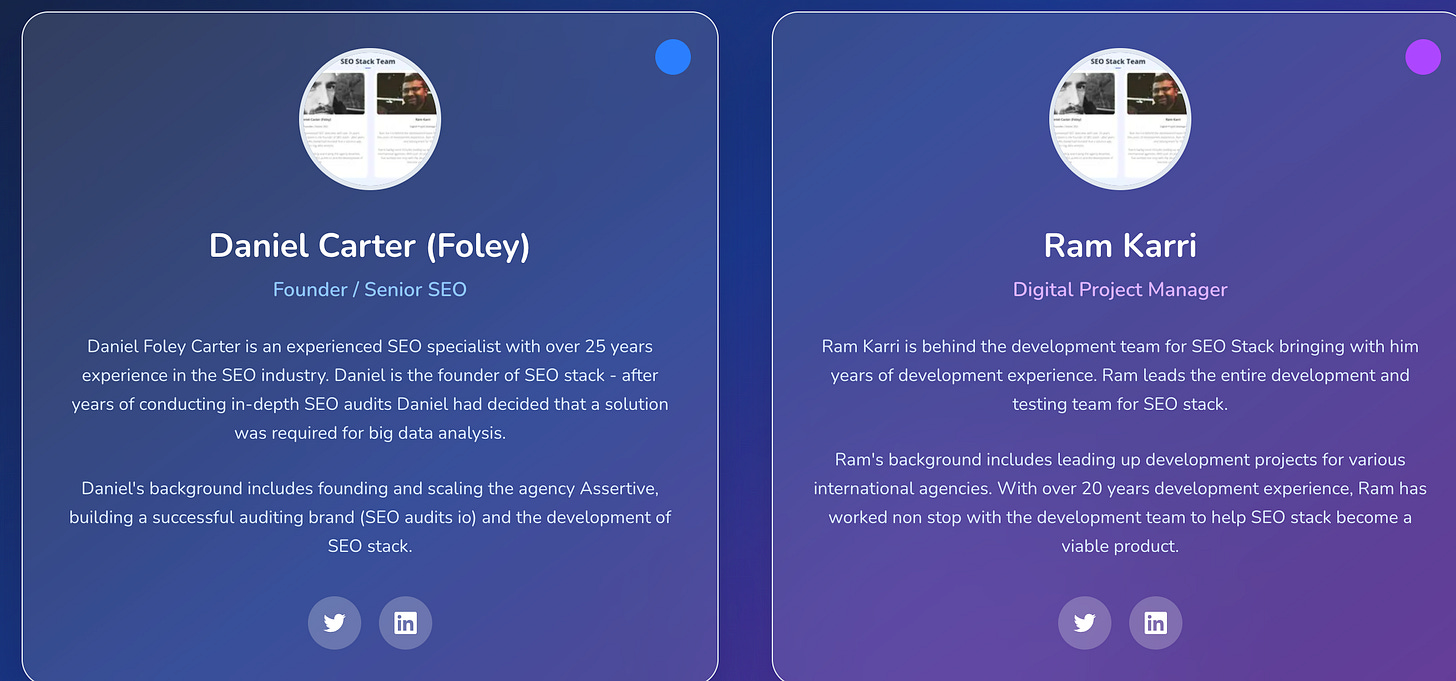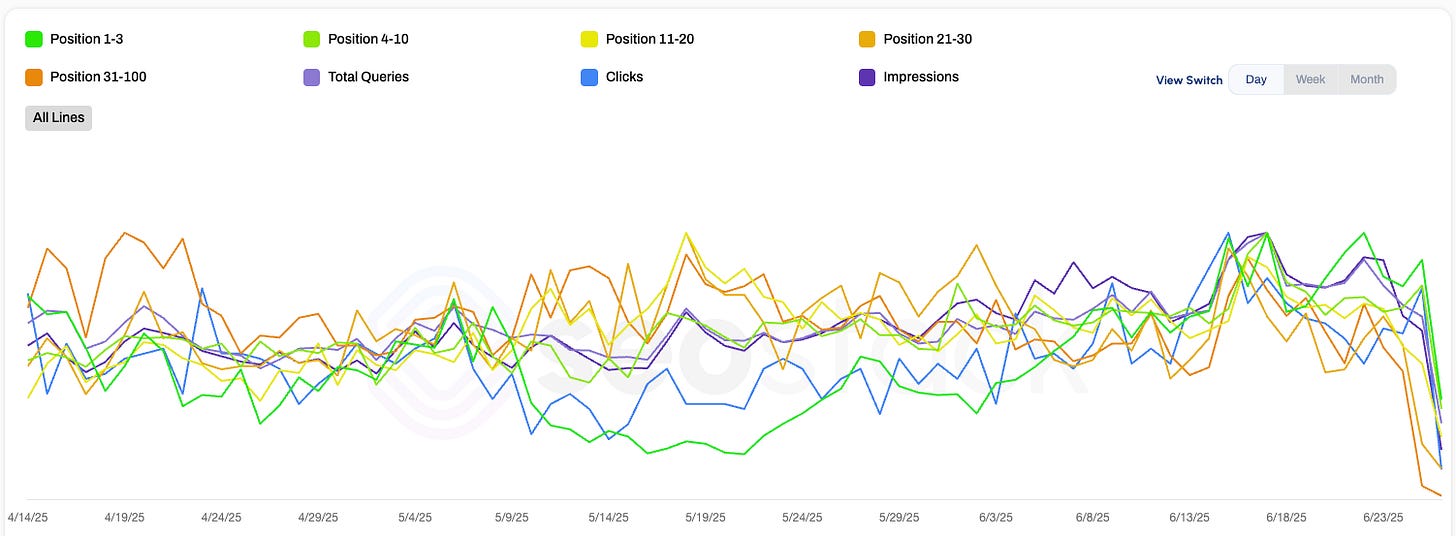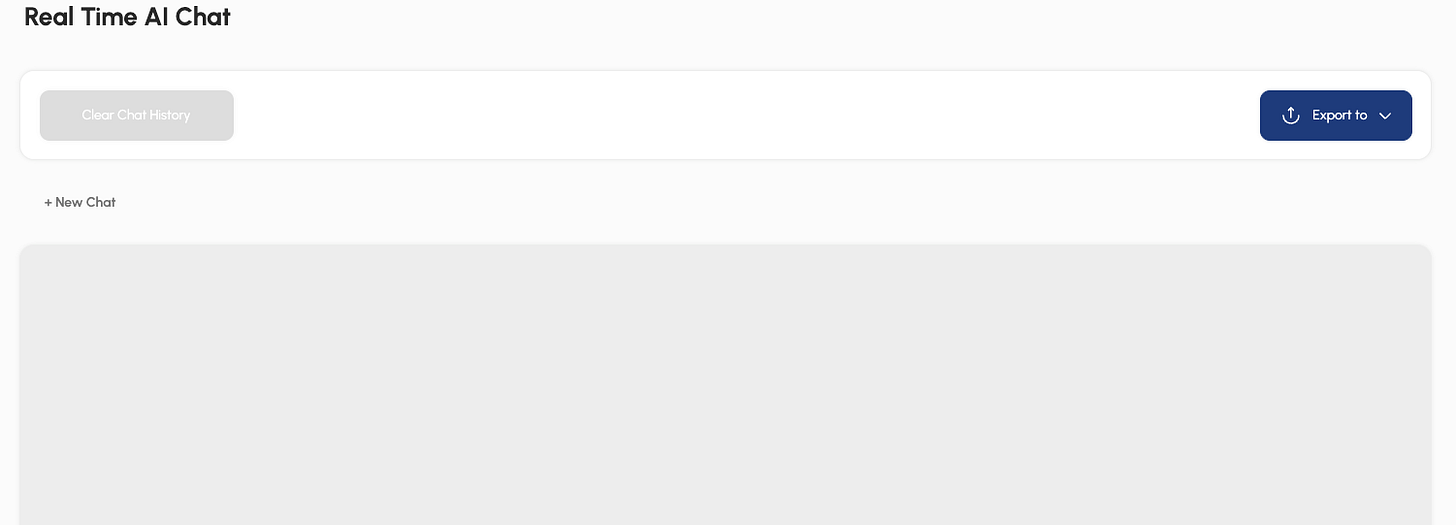Not Another GSC Skin: SEO Stack is a Tactical Engine for Real SEOs
Designed by SEOs, for strategists who’ve outgrown exports
Let’s start with a fact:
Google Search Console wasn’t built for SEOs.
It was built for diagnostics—URL inspection, basic indexing, and coverage alerts—not for strategy, not for workflow, and certainly not for advanced pattern recognition.
I’ve spent the last decade reverse-engineering SEO frameworks for global brands, scaling across log files, NLP maps, and data pipelines. I’ve worked around GSC limitations with API hacks and Sheet formulas more times than I care to count.
Then I got access to SEO Stack.
I didn’t just integrate it.
I rebuilt my entire technical SEO architecture around it.
I rebuilt my entire technical SEO architecture around it.
Earlier: GSC → export to Sheets → clean data → analyze manually or visualize in Looker Studio → repeat
Now: SEO Stack → everything inside one interface → filter, analyze, annotate, assign, and track—no switching tools, no patchwork systems
What SEO Stack is all about
SEO Stack is a post-GSC intelligence layer that transforms raw query data into strategic insight.
Conceived by Daniel Foley Carter and brought to life over three years of development, SEO Stack launched in mid-2024—not just to show you traffic, but to reveal why performance shifts, how content decays, and where revenue leaks.
If Google Search Console is a map, SEO Stack is your command center—equipped with powerful tools, smart annotations, and full access to your SEO data, built for professionals who demand more than just surface-level metrics.
Core Differentiators:
How Does SEO Stack Compare to Other SEO Tools?
There’s no shortage of GSC-based tools in the market—but very few were built by SEOs for SEOs. Here’s a quick breakdown:
SEO Stack
Focus: Strategic SEO intelligence
Strengths: Enables deep query-level analysis, tracks tasks tied to specific URLs, supports full data retention (10+ years), includes NLP audits, click decay modeling, and intent breakdown—all in one integrated system.
Limitations: Not built for beginners. The UI requires orientation, and the learning curve assumes you're comfortable operating beyond basic rank tracking.
Sitechecker Pro
Focus: Automated SEO auditing and reporting
Strengths: Clean UI, easy setup, fast technical audits, and beginner-friendly dashboards make it suitable for marketers and small teams.
Limitations: Offers little control over raw query data. Lacks the depth needed for custom segmentation, decay modeling, or real SERP layer intelligence.
GSC Visualizer
Focus: Chrome extensions for GSC visualization
Strengths: Highly intuitive visual overlays for GSC exports, quick toggles to map CTR, impressions, and position over time, excellent for spot-checking and on-the-fly analysis.
Limitations: Purely visual. Does not offer insight tracking, semantic audit capability, or any task-to-outcome framework.
SEOGets
Matthew Mellinger (Cofounder)
Focus: Lightweight SEO toolkit for clarity and UX
Strengths: Clean UI, simplified controls, ideal for lean teams managing editorial pipelines and basic performance tracking.
Limitations: Prioritizes surface metrics like visibility and rank summaries. Does not support strategic segmentation, NLP depth, or SERP behavior modeling.
GSC Guardian
Focus: Chrome-based GSC enhancement
Strengths: Makes filtering and exporting GSC data easier. Helps power users pull more data out of the native interface.
Limitations: No built-in intelligence layer. No support for query clustering, intent mapping, or historical tracking beyond GSC’s limits.
Coupler.io
SaaS data automation platform
Focus: ETL (Extract, Transform, Load) automation for marketing data
Strengths: Reliable GSC-to-Sheets or GSC-to-BigQuery sync. Helps create centralized dashboards or automate exports.
Limitations: Not built for SEO strategy. Lacks analysis, pattern recognition, or audit capabilities. You still have to do all the interpretation manually.
Integrately
Automation platform
Focus: Workflow automation between SaaS tools
Strengths: Good for automating routine exports or triggering alerts across tools (e.g., Slack + GSC + Sheets).
Limitations: Not SEO-native. Requires you to architect everything yourself. Offers zero visibility into query-level insights, decay, or CTR patterns.
Personally i have tested all these tools but all these tools are nowhere close to SEO Stack.
Real-Time Audit at Scale: What SEO Stack Revealed
When I say SEO Stack is built for insight-to-action SEO, I’m not talking about theory—I mean this:
🧭 1. NLP Brief + Title Rewrite → Unified Task Layer
In seconds, I can create an NLP brief and rewrite meta titles based on AI-suggested rewrites, intent labels, and actual page-level performance. No more scattered spreadsheets. One click assigns tasks, tags intent, and monitors result impact.
Use Case:
One page had a strong query base but <1% CTR. I used SEO Stack’s rewrite engine, selected “Transactional” intent, and published a new meta within minutes. CTR climbed to 4.3% in two weeks.
Track it → Watch it → Learn from it → Repeat.
📊 2. Performance Overview → Trends That Matter
You’re not just seeing traffic here—you’re diagnosing patterns. Over 6 months:
Clicks: +61.76%
Impressions: +86.85%
Average Position: Improved by 37.84%
CTR: Slight drop, but expected with large impression growth
That drop? Not a problem—it’s a prioritization signal. It means I’ve surfaced more, now I fix underperforming CTRs.
📈 3. URL-Level Delta Reports = Your Fix List
Now we’re inside the engine room. This table is a goldmine.
One URL gained +447 clicks (1,108 vs. 661)
Another exploded from 1 click to 449
But a third dropped by -140 clicks with a CTR dip
🛠️ What I Did:
I sorted by click drop, cross-checked NLP salience + internal links, and found missing anchor density.
Fix: Re-linked from top-performing clusters → CTR +2.8% in 14 days.
🔍 4. Query Maps = Where Decay Hides
13K+ queries on a page, but 11.8K were zero-click? That’s click decay in action. You’d never catch that in GSC alone.
🧠 Fix:
I found high-impression queries sitting at 11–20 in SERPs with <1% CTR. I updated headlines + structured data to match query intent.
👉 CTR doubled within 10 days.
🧬 5. Position-Level Pattern Detection
Want to spot when content is slipping into page 2-3 graveyards? This graph visually tracks how many queries live in Positions 1–3, 4–10, and beyond.
One content cluster lost “top 3” dominance starting May → rewrote headers, added FAQ schema
→ Regained Position 1-3 share.
🧠 6. Intent vs. Volume → Stop Guessing, Start Acting
SEO Stack separates clicks, impressions, and search intent (Informational, Transactional, Commercial, Navigational). One view. No filters.
☑ Found 6 straight days with Commercial intent spikes and click drops
Fix? Retarget content toward buyer queries → Inject product CTAs and schema
Result? +7.1% CTR lift, +42% conversion boost.
📅 7. Daily Change Breakdown → Micro-Test Friendly
This chart is your daily heartbeat. I spotted a dip on April 14 and 15—clicks down, impressions up. CTR warning.
Volume of queries was stable, so the problem wasn’t demand. It was match intent or SERP snippet clarity.
→ Meta rewrite. Clicks rebounded within 3 days.
🍰 8. Intent Pie + NLP Terms = Zero-Waste Content Strategy
The donut chart? It’s not just pretty. It quantifies your strategic content gaps.
Top terms like “How to”, “Guide”, “Pay”, “Order”, and “Buy” show exactly what your audience wants.
No more keyword stuffing—just align copy with proven intent.
🔮 9. Click Gap Modeling = Predictive SEO
This one’s special: potential clicks at 1–5% CTR side-by-side with actual clicks.
That gap? It’s your lost revenue.
One URL showed 60 actual clicks, with a 4% CTR potential of 180+ clicks.
Fix: I refreshed meta, boosted internal anchor flow, and added FAQs → Jumped to 152 clicks within 3 weeks.
🚨 Spotting the Invisible: When Clicks Don’t Tell the Whole Story
This chart hit me hard.
While URLs “with clicks” hovered between 1,500–2,000 over the past year, those “without clicks” climbed past 4,000 and only started tapering recently. That’s 2x+ the volume of untouched opportunity—real estate sitting on page 1 or 2, doing nothing.
🛠️ Fix:
I drilled down to see which queries had impressions but 0 clicks. These are your click-gap pages—perfect for meta rewrites, SERP testing, and schema upgrades.
With SEO Stack’s CTR decay model, I could see where a 4% CTR was possible and test from there. Not guess—test.
🧠 URL Health Breakdown = Your Content Priority Blueprint
This donut is more than a pretty chart—it’s your war room.
Out of 2,198 URLs:
1,439 are Dead (0 clicks, <100 impressions)
352 are Weak (1–10 clicks)
159 are Opportunity (0 clicks but >100 impressions)
Only 24 are Performance (1,000+ clicks)
💡 Insight: Over 65% of content is either decaying or under-leveraged.
🛠️ Fixes I queued:
Dead Pages → De-index or rewrite. Most were programmatic, thin, or misaligned with search intent.
Weak Pages → CTR optimization + internal link flow. Several showed second-page visibility but no traction.
Opportunity Pages → Meta + schema rewrites. They had the reach—just not the pull.
Stack’s real-time annotation lets me log every change and watch CTR movements without waiting for monthly reports.
🔍 Drilldown: Why “Dead” and “Weak” Isn’t the Same Thing
This is where most audits stop—but SEO Stack doesn’t.
One weak page had 23,368 impressions but just 2 clicks—CTR of 0.01%, ranking at #8.82
Others had >10K impressions with similar underperformance
These aren’t just weak—they’re under-optimized click machines waiting to be unlocked.
🛠️ Fix:
CTR audits showed no alignment between query intent and meta copy
Some pages lacked even basic schema
Many were missing internal anchors from high-performing pages
In one case, a simple headline tweak + internal link added to a hub page led to +3.4% CTR in 9 days.
🤖 Real-Time AI Chat: The Shortcut for Tactical Execution
This isn’t your typical AI window. This is context-aware, full-dataset chat that knows your query volume, decay issues, and click gaps.
Use cases I’ve tested:
“Give me all URLs with >1,000 impressions and <0.3% CTR”
“Which opportunity URLs are older than 6 months?”
“Suggest a transactional title for /pricing-guide based on current queries”
🛠️ Result:
Saved hours of CSV cleanup. Real decisions made in minutes, not meetings.
My Suggestion
While SEO Stack operates at a strategic depth that’s unmatched, I want to give a nod to a lightweight but surprisingly useful Chrome extension: Advanced GSC Visualizer by aminfseo.
It’s not trying to replace data frameworks—but what it does well is visual clarity.
The color-coded overlays, simplified CTR-position plots, and instant toggles save real hours when you’re scanning exports or preparing reports for clients. The UX is clean, fast, and genuinely helpful for making GSC data more digestible—especially when executive eyes need to grasp patterns at a glance.
Here’s my honest take as someone deeply invested in both strategy and adoption:
Daniel’s decision to retain the native GSC feel inside SEO Stack is 100% the right move for power users.
But when I flip to GSC Visualizer for a few minutes during a review call, I see client eyes lock in.
It’s not a flaw. It’s an opportunity.
If there’s ever a chance for collaboration between Daniel and Amin—combining the strategic backend of SEO Stack with Amin’s visual design thinking—the result could elevate the platform to another tier.
As someone who builds architecture around data, but still has to present outcomes to clients—this would be a very welcome evolution.
Constructive thought, not critique. Because SEO Stack is already the brain. But a touch more presentation muscle could amplify its adoption in agency settings.
My thoughts: Strategic SEO Isn’t Optional. Tools Like This Make It Possible.
I’ve used and tested every major SEO platform. None have given me this:
↳ GSC-level data with 10-year history
↳ Unlimited exports by query, URL, and intent
↳ CTR decay models across custom clusters
↳ Live NLP audits with E-E-A-T grading
↳ Integrated task tracking from insight to result
This tool doesn’t give you dashboards.
It gives you leverage.
Want In?
Here’s how to try it:
Go to : https://www.seo-stack.io
Pick any plan
Bonus: Share public insights, feedback, or write-ups like this one?
You might get 12 months free. I’m aiming for that, too.
P.S: If you scroll to the footer on the SEO Stack website, you’ll notice the Facebook icon doesn’t link anywhere. Totally minor—and honestly, easy to overlook when you're deep in development (especially when you're Daniel, who’s usually neck-deep building features that actually matter). thought I'd flag it for completeness.
Author: Hawrry Bhattarai
Disclaimer
This is not an affiliate post. I’m not being paid to write this, and there’s no referral commission hiding in the links. I’ve used SEO Stack extensively—enough that I’ve cancelled most of my SEO tool stack since adopting it.
I believe in first-party data over third-party noise, and this tool fits the way I operate: fast, deep, and strategic.
Yes, I’m openly giving it a shoutout with the hope of earning extended access (up to a year free). But every insight shared here comes from real, hands-on implementation—not marketing fluff.
The performance examples are from an ecommerce site I actively manage. CTR gains may vary depending on your vertical. With the rise of AI Overviews, Perplexity, and zero-click experiences, SEO outcomes are becoming more nuanced. This tool won’t guarantee success—but it will help you identify the right levers to pull.
Run your own tests. Pull your own reports. Pick up what works and adapt the rest.
Important:
Copying or republishing this content without permission is strictly prohibited. If you find it valuable, reference it, share the link, or ask—but don’t just scrape and paste. This isn’t generic SEO commentary—it’s built on actual work.


























Great one Hawrry. Hope Daniel fixes the link. Haha